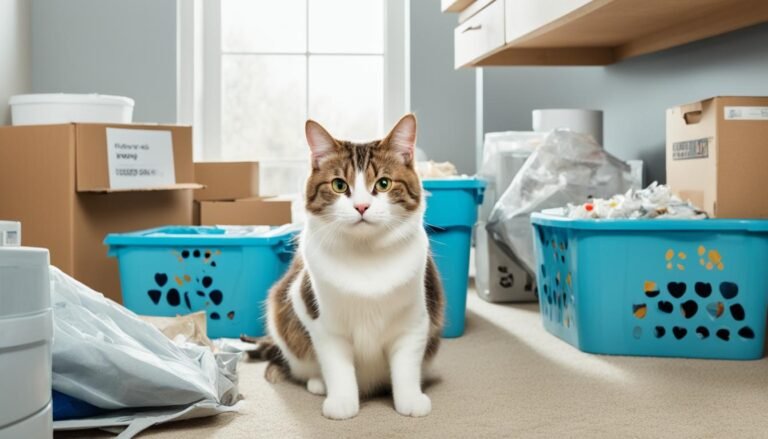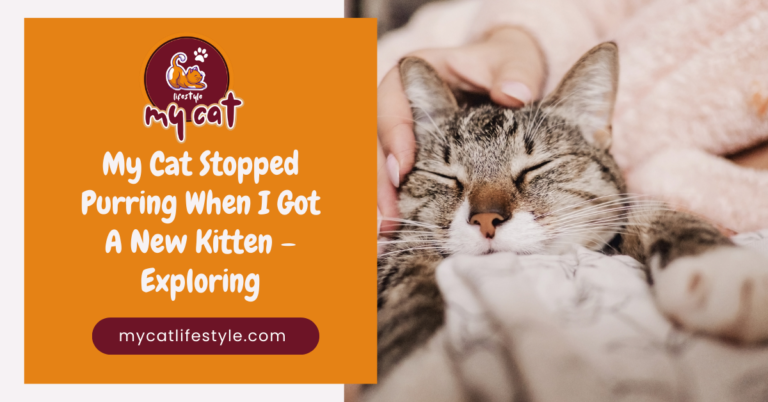Why Does My Cat’s Nose Change Color? ( The Complete Guide)
Cats are adored and loved by countless people worldwide as the most perfect pet keeping in mind their intelligence, innocence, and tranquil nature. Over time, families prefer to share their homes with these feline friends. Providing their owner with psychological support, cats have a remarkable ability to prove a genuine human-animal connection.Belonging to the feline family of animals, which consists of approximately 37 different species globally, cats are undoubtedly some of the most unique creatures.
The most interesting one is their ever-changing nose color. This color change is quite common in cats and mostly, it appears curious to its owners. Today, we will delve into the scientific reasons behind this intriguing trait.

Why does your cat’s nose change color?
Have you not found this fascinating how a cat’s nose is different from ours? The reason is that their noses are packed with numerous tiny blood vessels, which can expand, and contract based on certain conditions, creating the illusion of color range. For instance, when a cat is feeling a bit chilly, their nose may give you a lighter pink hue as the blood vessels narrow. On the other hand, when blood pressure rises, these vessels may enlarge, changing the appearance of the nose. Moreover, a cat’s nose color range also depends upon their age, breed, and the species itself.
This color change occurrence is influenced by a variety of factors. These factors include sunlight exposure, health issues, medications, diet, or any environmental factors. This color change is usually nothing to worry about as it is a natural occurrence. However, it is crucial to pay attention, as there are underlying factors where changes in a cat’s nose color might require immediate attention.
Types of Cat Nose Colors
Cats have nose colors ranging from pale pink to black, while others have a combination of both colors. Interestingly, few breeds have a darker shade of pink or even a lavender-grey color.
So, let’s take a look at some of the most common colors of cat noses:
-
Pink Nose:A gently pink hue is the regular color for most cats. It is due to their natural pigmentation.
-
Black Nose:A dark color that is often seen in black cats because of extra melanin; a normal pigment that colors their skin.
-
Orange Nose:This type of color is similar to a vibrant sunset. This orange hue comes from special pigments called carotenoids found in their fur.
-
Blue Nose:This bluish tint is created by how light scatters off their fur, giving it that unique blue color.
-
Two-tone nose:This tone is quite interesting to find a nose with different colors. Sometimes, it is genetic or how pigments are spread as it gives this cool two-tone look.
-
Spotted Nose:This type of cat nose has spots or speckles dotting their nose. This is due to pigment cells getting together in small groups.
-
Pale or White Nose:In this type of cat nose, the color with turn paler or white. This happens as cats grow older and produce less pigments and lower melanin production.
-
Swollen or Red Nose:When a cat’s nose is irritated due to allergies, infection, or injury, it looks swollen or red due to irritation.
Reasons For Your Cat’s Nose Changing Color
Now, we will explore the most common reasons why a cat’s nose keeps changing color:

1.Changes in Temperature
Imagine the thermometer, the same phenomenon applies to a cat’s nose as it reacts to changes in temperature. During winter seasons, the blood vessels in their nose shrink which results in giving it a lighter appearance. In contrast, these vessels expand during warm weather to make the nose look darker.During winter, this change is noticeable as you might see your cat’s nose turn pink or even supply a reddish hue. So, if any of you have spotted a color change, it is likely due to the shifts in temperature.
2.Skin Cancer
Skin cancer causes a cat’s nose to lose its normal color and turn pale. If you notice your cat’s nose staying white all the time, it is necessary to reach out to a vet for proper checkups and care.

This type of disease can also be seen when your cat is losing weight, fatigued, or losing interest in their activities.
3.Mood Changes
It is also common to see a change in cat noses when these felines are having an enjoyable time. When they get excited, the blood vessels in their nose can widen resulting in a different hue. Moreover, a cat’s nose can show different shades when their heart rate and blood pressure are high. But fortunately, there is nothing to worry about this change.
4.Anemia
If a cat’s nose is light pink, there might be a shortage of red blood cells in the body. This shortage is a serious medical condition called Anemia. There are proved reasons to become anemic.If you spot this change in your cat’s nose color, you should consult a vet for a thorough diagnosis as Anemia comes with serious health problems.
5.Dehydration
If your cat’s nose is looking paler than usual, then it is mainly due to dehydration. When a cat does not have enough water in its body, their nose will lose its natural color.

However, after your cat is taking sufficient water and this pale appearance stays, it is time to connect to a vet to figure out what is happening.
6.Diabetes
Another reason behind the pale appearance of the cat’s nose might be due to possible diabetes. This health issue also causes this feline family to get thirsty. So, it is especially important to keep an eye on your cat who has a pale nose.
7.Allergic Reactions
It is also common that your cat’s nose can change color due to allergies. This allergy causes their nose to become dark.Signs of allergies include sneezing, coughing, diarrhea, vomiting, or itching. If you notice these changes, then it is necessary to see your vet.
8.Decreased Oxygenation
Your cat’s nose might turn blue color because of a lack of oxygen. This change of color is caused by various issues like lung issues, heart problems, or ingesting toxins. Prolonged oxygen deficiency can harm their organs and even lead to death. So, it is important to take them to the vet for a checkup.
9.Respiratory Problems
A cat’s nose becomes redder when these felines are facing respiratory distress as it increases their heart rate. Another thing is if your cat is regularly active and playful, then it might be because of simply being out of breath. However, if your cat has not been playful and is facing difficulty breathing then you should seek vet advice.
Is It Normal for My Cat’s Nose to Change Color?
Yes, it is completely normal for a cat’s nose to experience changes in color due to multiple factors. These factors include but are not limited to exposure to sunlight, aging, genetic predisposition, and potential health-related issues.
Each of these factors has the potential to make a little or more pronounced color change in a cat’s nose. So, these are the defined factors that are contributing to this unique and evolving color palette over time.
FAQ’S
1.Why does my cat’s nose change from pink to white?
A cat’s nose can shift its color from pink to white, commonly showing dehydration. When a cat experiences significant dehydration, their nose becomes pale or even completely white.
2.Why is my cat’s nose suddenly dark?
As cats grow older, their nose color may change. Due to this aging process, these felines develop a darker nose as they age. This type of change may also arise due to sunlight exposure.
3.Why did my cat’s nose change from black to pink?
During chilly weather, a cat’s nose appears pink due to the contraction of blood vessels.
4.What does an unhealthy cat nose look like?
If your cat’s nose is unhealthy, you will find swelling, redness, bleeding, or crusting.
5.What should a healthy cat nose look like?
Certainly, a normal and healthy cat’s nose gives the appearance of a pink color.
6.How can I help my cat clear his nose?
To give your cat a healthy, use a humidifier during winters. You can also clean their nose with a warm cloth during nasal congestion. Nasal sprays are also used for this purpose.
Conclusion
To conclude, the ever-fascinating color of a cat’s nose is a marvel that adds to the charm of these unique feline companions. There is a complex interplay of factors that change the hues of a cat’s nose including climate change, genetics, or aging. These color patterns vary between lighter pink/ white to darker hues in warm weather.
Surprisingly, this unique change of color gives crucial insights into the cat’s health. So, in this way, we can experience a deeper connection and appreciation of this feline family. So, it is essential to prioritize caution. Seeking prompt medical attention ensures the required treatment and care for a healthy life ahead.






